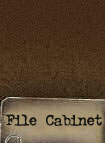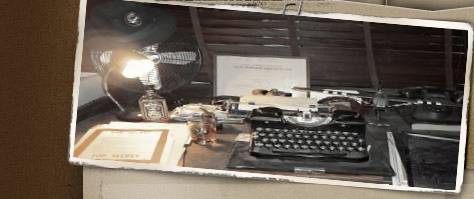|

Battle Relic: Shrapnel
shell balls from Ypres, Belgium,
World War One, presumably British.
Introduction: From the
Hooge Crater Museum in Ypres,
Belgium, we were able to
purchase ten (10)
so-called "shrapnel balls"; lead,
marble-sized spheres, similar in
design as musket balls from earlier
times,
meant to be shot from a Shrapnel
shell "in flight".
The excellent museum, across the
road from the Commonwealth Hooge
Crater Cemetery, is located in the
heart of World War One combat
scenes.
Here the three Battles of Ypres took
place, awful weapons such as
poisonous gas (mustard gas, also
known as "Yperite") and
flamethrowers were first deployed
here, and a gigantic crater from a
mining attack on German trenches led
to the addition of “Crater” to the
name of the hamlet of Hooge, east of
Ypres proper.
|
|
Item Description: Ten
marble-sized metal balls, presumably
made out of lead, of which eight
appear to be pristine and not
ejected from a shrapnel shell by
explosion. They show wear only of
contact with other shrapnel balls.
Two balls appear to have been dug up
from the typical khaki-colored soil
of Flanders and show signs of
deformation, presumably from
striking objects after the shell in
which they were incases burst.
|
(click for
an enlargement)
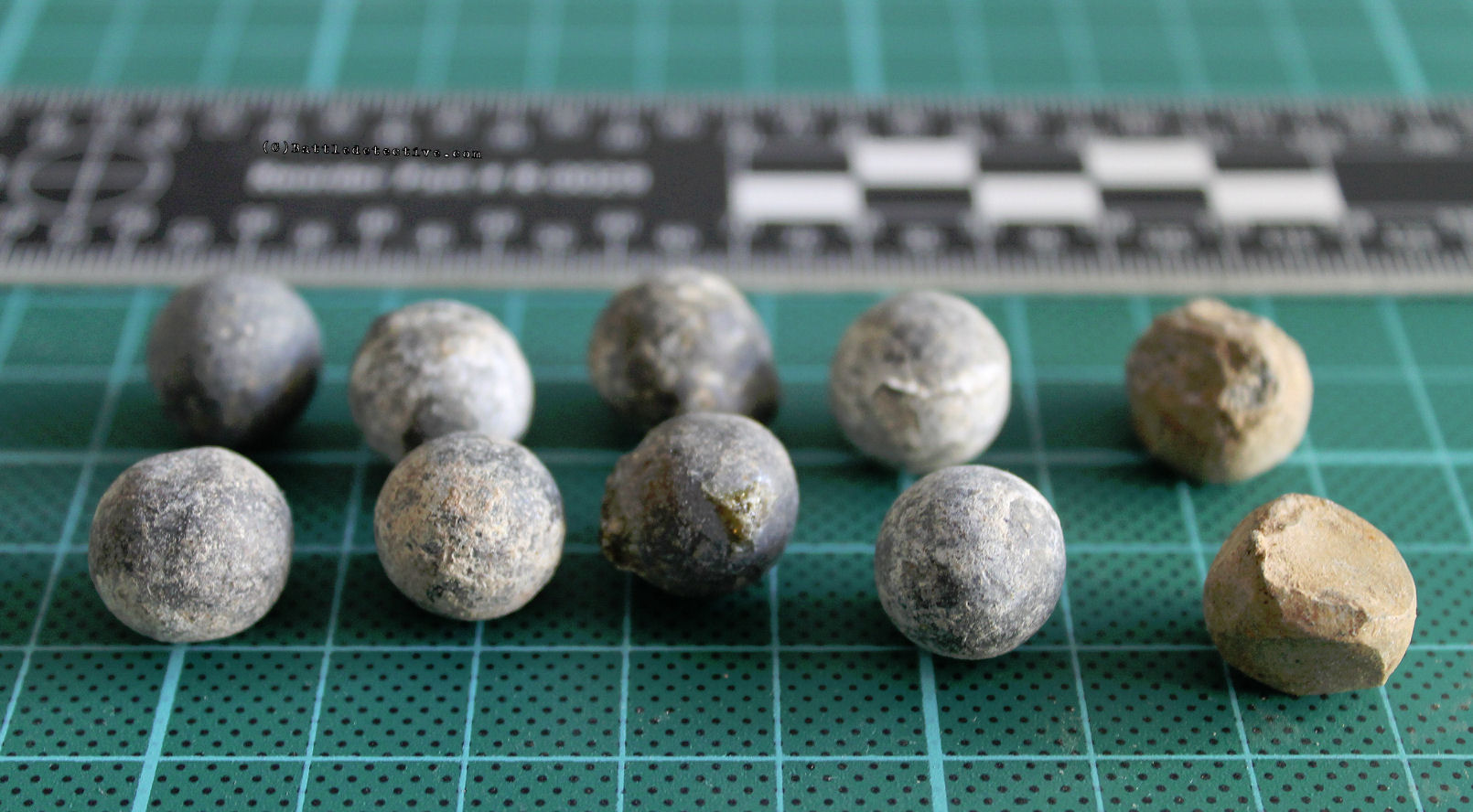 |
History:
Shrapnel's invention
Shrapnel shells were anti-personnel
artillery shells which carried a
large number of individual bullets
close to the target and then ejected
them to continue along the shell's
trajectory and strike individual
targets.
The shrapnel balls relied almost
entirely on the shell's velocity for
their lethality.
Shrapnel is named after
Major-General Henry Shrapnel
(1761–1842), an English artillery
officer, whose experiments resulted
in the design and development of a
new type of artillery shell.
|
|
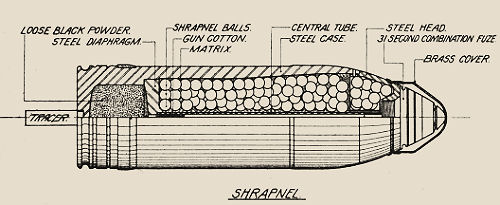 |
Canister & grape shot
Until lieutenant Shrapnel’s
invention in 1784, the artillery
could use "canister or grape shot"
to defend themselves from infantry
or cavalry attacks.
This type of ammunition consisted of
a tin or canvas container filled
with iron or lead balls instead of
the usual cannonball.
When fired, the container burst open
during passage through the bore or
at the muzzle, giving the effect of
an over-sized shotgun shell.
At ranges of up to 328 yards
canister shot was still highly
lethal, though at this range the
shots’ density was significantly
lower, which made it less likely to
strike a human target.
|
|
(click to enlarge)
1)
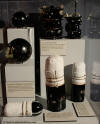 2)
2) 3)
3) 4)
4)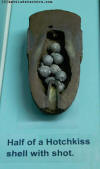
1)
Canister and grape shot (Fort
Defiance Visitors Center,
Clarksville, TN)
2) Grape
shot (Army Museum, Leiden, The
Netherlands)
3)
Six pounder shot shell with Borman
fuse (Fort Donelson Visitors Center,
Dover, TN)
4)
Hotchkiss shell (Fort Donelson
Visitors Center, Dover, TN) |
Improvement of the shrapnel shell
Shrapnel's innovation combined the
scattering effect of canister shot
with a time fuse to open the
canister and disperse the bullets it
contained.
The first designs consisted of a
hollow cast-iron ball filled with
lead balls and gun powder and fitted
with a rudimentary time fuze. After
being fired, the fuze would break
open the shell and the shrapnel
balls would carry on with the
shell's "remaining velocity".
Inside the shell a diaphragm
separated the bullets from the
bursting charge. As a buffer to
prevent lead shot to deform, a resin
was used as a packing material
between the shot.
The final shrapnel shell design,
adopted in the 1880's, used a forged
steel cone shaped case with a timer
fuze in the nose.
It also featured a tube running
through the centre to transmit the
ignition flash to a gunpowder
bursting charge in the shell base.
The use of steel allowed the shell
wall to be made much thinner and
therefore allow space for more
bullets. It also withstood the force
of the powder charge without
shattering, so that the bullets were
fired forward out of the shell case
with increased velocity, much like a
shotgun. This is the design that was
in standard use when World War I
began in 1914.
|
|
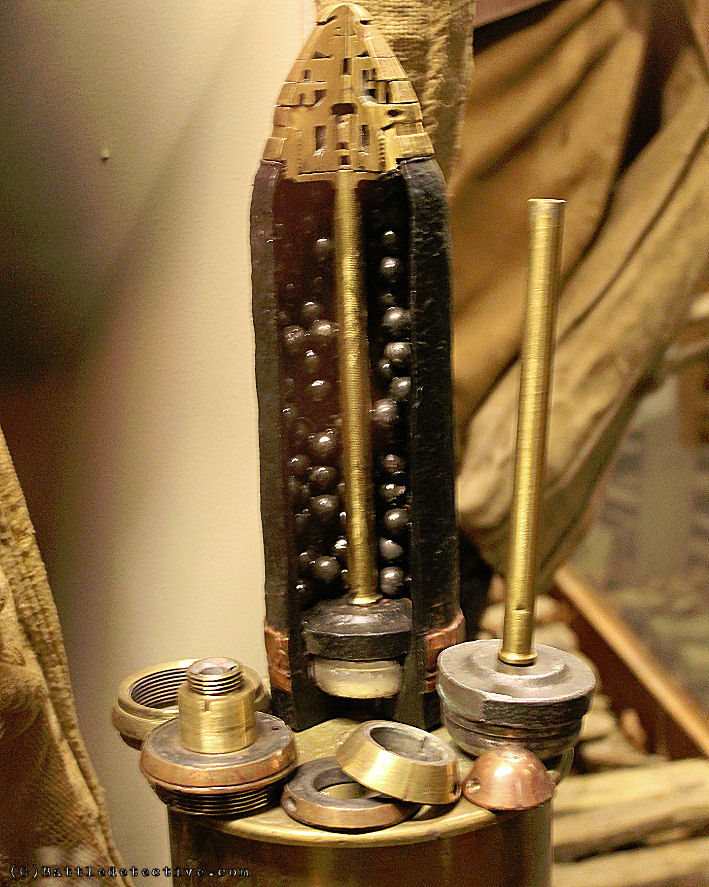
Cross section of a
shrapnel shell on display in the
Hooge Crater Museum in Ypres,
Belgium |
Size of the shrapnel balls
The size of shrapnel balls in World
War I was based on the thesis that a
projectile energy of 58 foot-pounds
force (79 Joules in the calculations
of the US Army ) to 60 foot-pounds
force (81 Joules in the calculations
of the British military) was
required to disable an enemy
soldier.
A typical World War I 3 inch (76 mm)
field gun shell at its maximum range
travelling at a velocity of 250 feet
per second, plus the additional
velocity from the shrapnel bursting
charge (about 150 feet per second),
would give individual shrapnel
bullets a velocity of 400 feet per
second and an energy of 60
foot/pounds.
This was the minimum energy of a
single half-inch lead-antimony ball
of approximately 170 grains (11
grams).
The shrapnel bullets featured in the
Battle Relic # 20 are of this weight
and are therefore of a typical field
gun shrapnel bullet size.
|
|
(click for
enlargements)




 |
Shells, fuses and center tubes
littering the battlefield
The body of the shell itself was not
lethal.
Its only function was to transport
the bullets close to the target, and
it fell to the ground intact after
the bullets were expended.
A battlefield where a shrapnel
barrage had been fired was
afterwards typically littered with
intact empty shell bodies, fuzes and
central tubes.
This explains the abundance of
shells of all types and, above all,
time fuzes on display in the Hooge
Crater Museum:
|
|
(click for
enlargements)
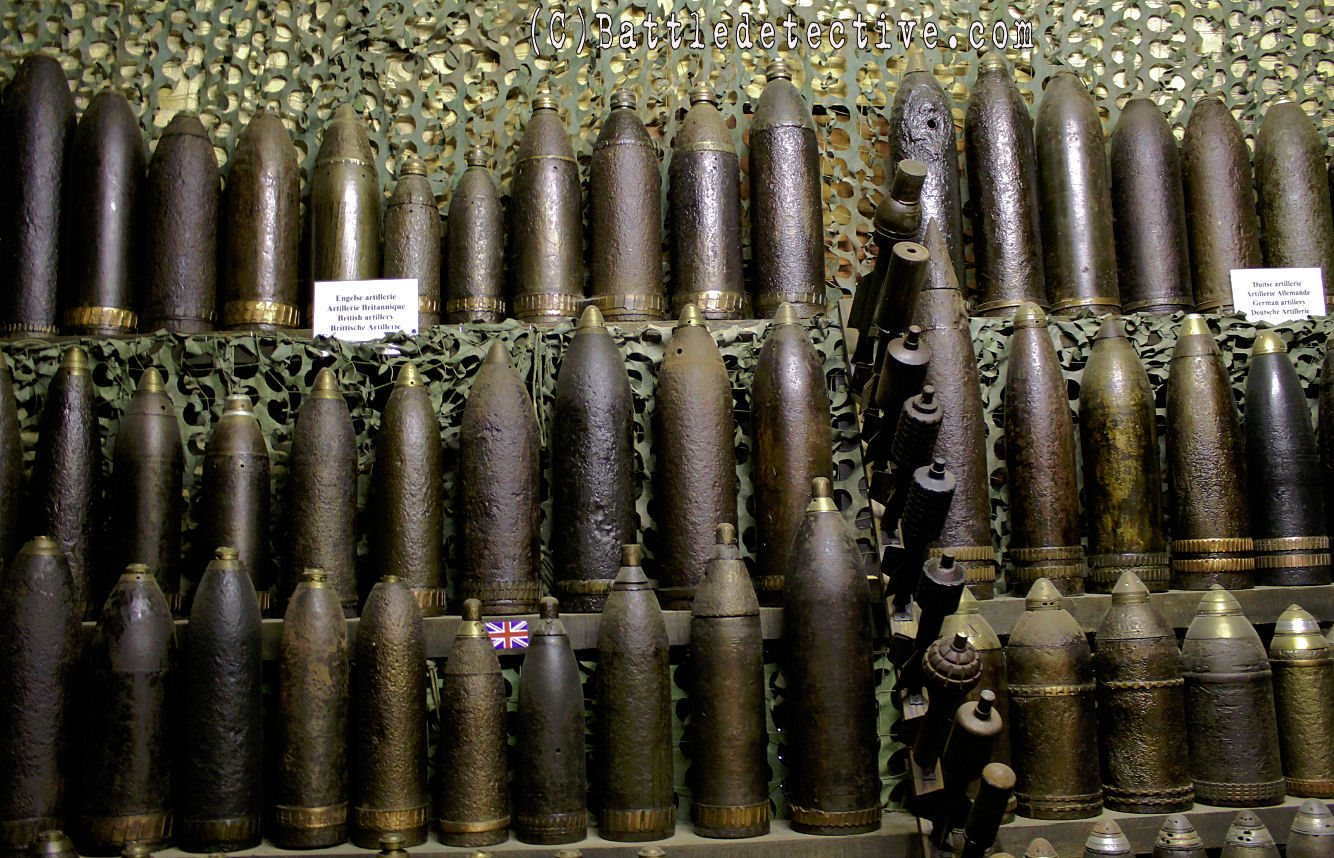
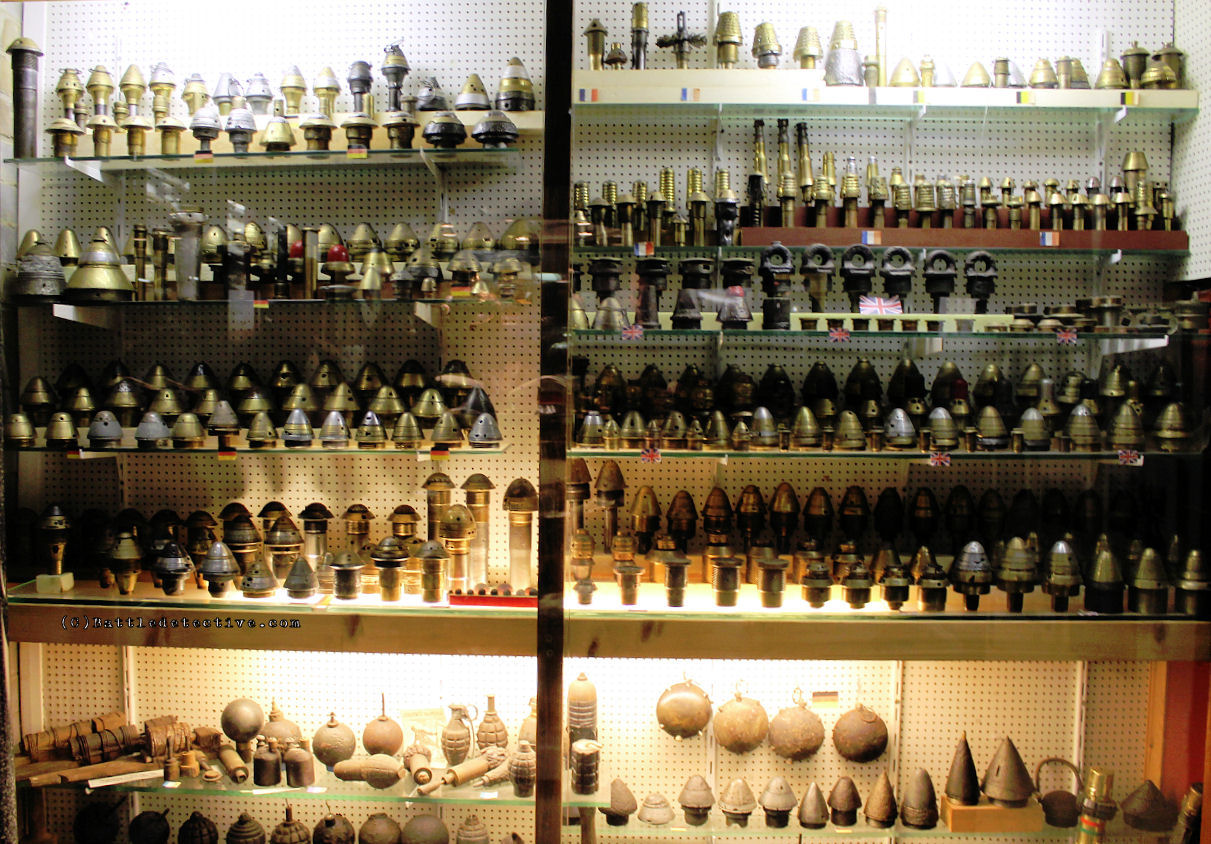 |
Troops under a shrapnel barrage
would try to collect and bring any
intact fuzes to their own artillery,
as the time setting on the fuze
could be used to calculate the
shell's range and the location of
the firing gun.
This could lead to counter fire
missions targeting the enemy's
batteries.
All museums in the Ypres area we
have visited feature large amounts
of empty shrapnel shells.
They are literally piled up or
stacked into low walls.
|
|
(click for
enlargements)
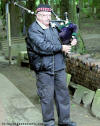

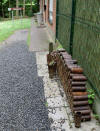

Empty shrapnel shells stacked at the
Sanctuary Wood Museum (3 photos
on the left)
and at the Hooge Crater Museum
(right)





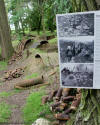
Empty shrapnel shells everywhere on
the grounds of the Kasteelhof Hotel
on Menin Road
(Battle Detective field office
during our stay in the Ypres area) |
Tactical deployment of shrapnel
in World War One
While shrapnel made no impression on
trenches and other earthworks, it
remained the favored weapon of the
British (at least) to support their
infantry assaults by suppressing the
enemy infantry and preventing them
from manning their trench parapets.
This was called 'neutralization' and
by the second half of 1915 had
become the primary task of artillery
supporting an attack.
Shrapnel being non-cratering was
advantageous in an assault, as
craters made the ground more
difficult to cross, although they
also doubled as safe areas and
firing positions for infantry.
Shrapnel was also useful against
counter-attacks, working parties and
any other troops in the open.
Shrapnel shells proved effective for
cutting barbed wire entanglements
only in the first stage of World War
One when the Germans used a thinner
wire.
As a result, shrapnel was only
effective in killing enemy
personnel.
The bullets also had limited
destructive effect and were stopped
by sandbags, so troops behind
protection or in bunkers were
generally safe.
Also steel helmets, both the German
Stahlhelm and the British Brodie
helmet (adapted by all Commonwealth
and armies and the US military),
could resist shrapnel bullets and
protect the wearer from head injury. |
|
(click for
enlargements)
1)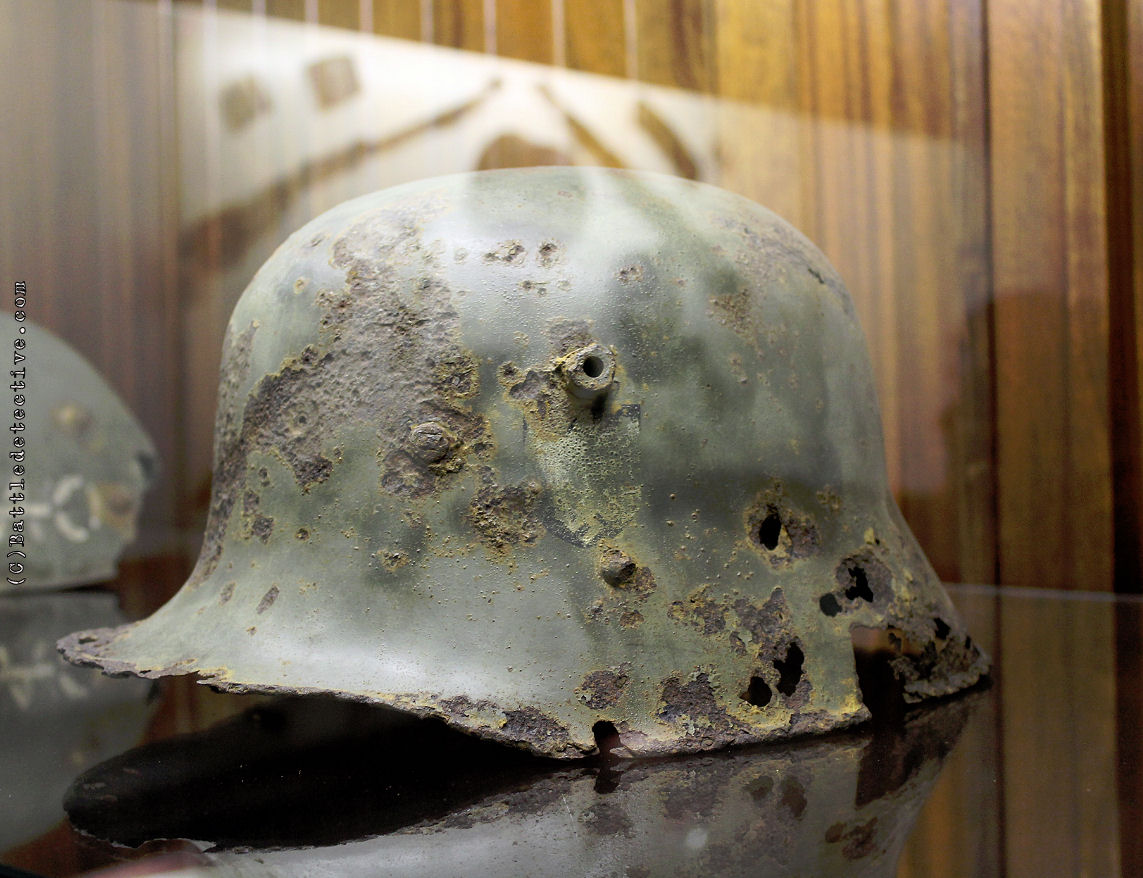 2)
2)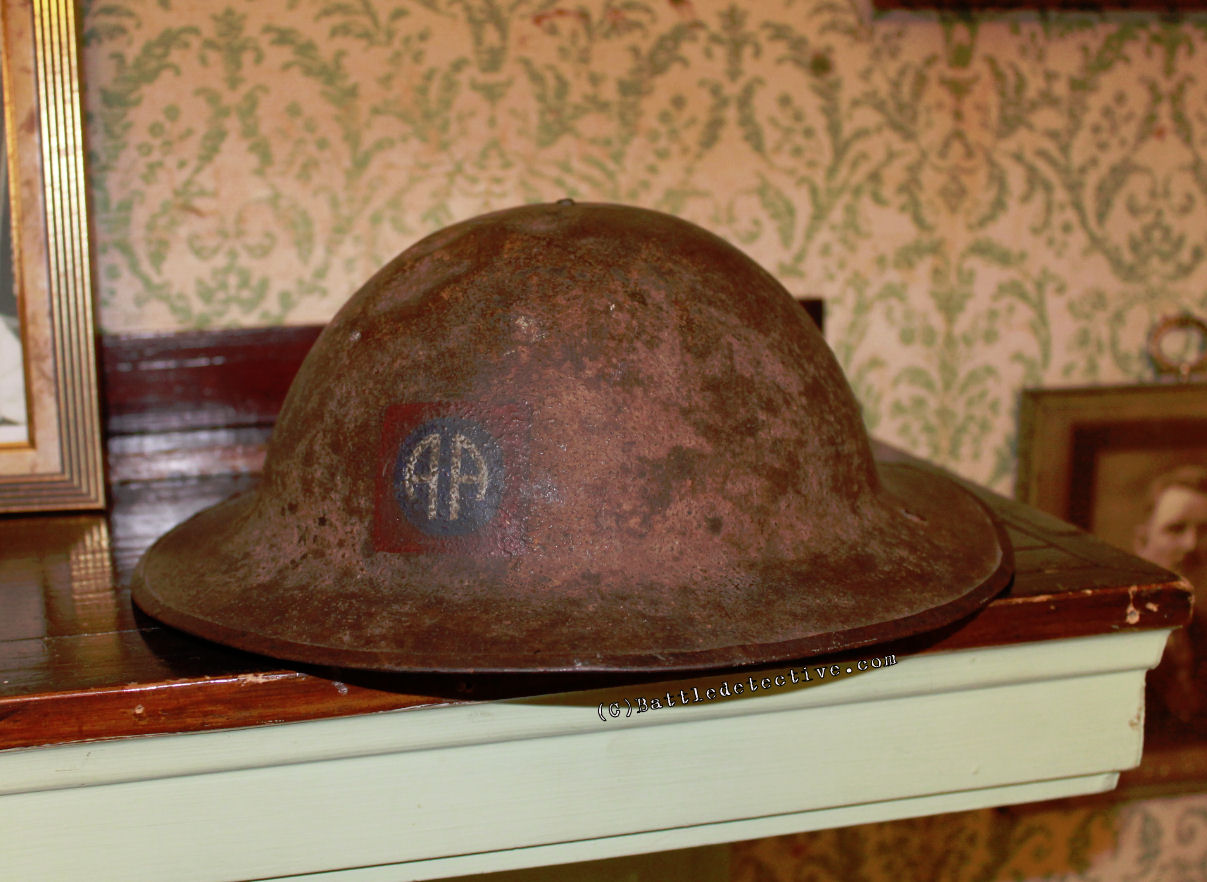
1)
German Stahlhelm of World War
One vintage painted over during the
Nazi era
(Camp Elsenbron Military Museum,
Belgium)
2)
Brodie Helmet of World War One of
the US Army's 82nd Infantry Division
(York Farm, Pall Mall, TN) |
|
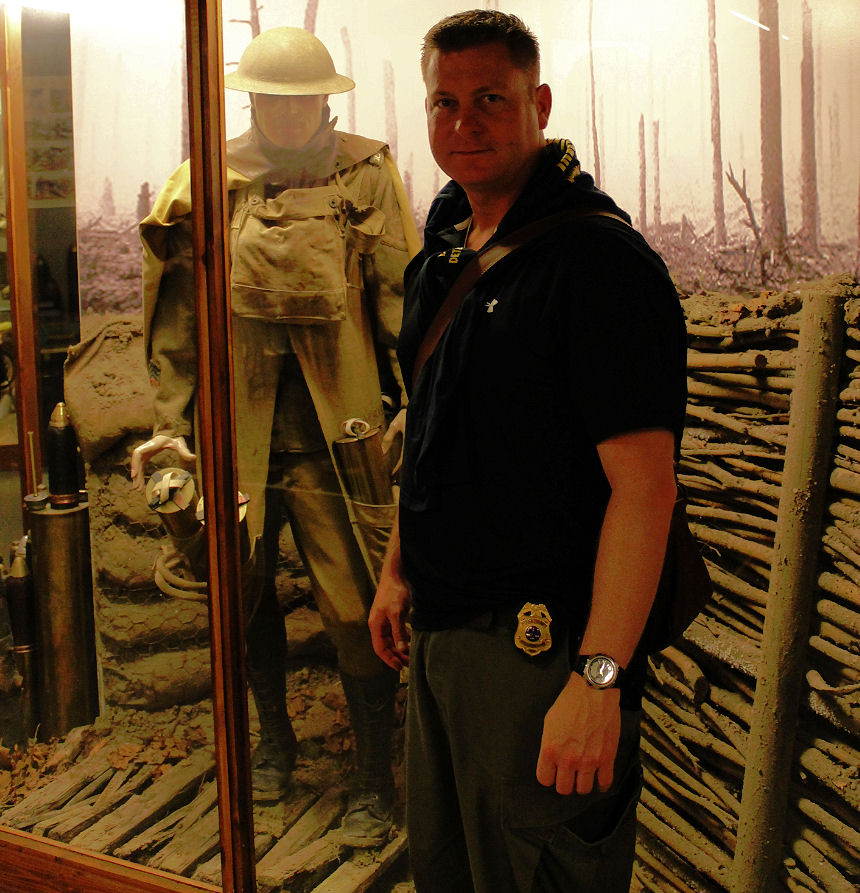
A British ammunition
bearer wearing a Brodie helmet
(left), a Battle Detective
(right)
Hooge Crater Museum, Ypres,
Belgium |
|
CONCLUSION:
Of the ten bullets in our
possession, eight are in a pristine
condition.
These may have come from a diffused
'dud'.
We learned that the Flanders fields
are still littered with unexploded
ordnance.
The other two bullets show signs of
deformity, likely from striking
objects after being ejected from
their shell. They are also coated
with khaki colored dirt; typical of
the Ypres battlefields. |
|
EXHIBITIONS: |
|
(click for
enlargements)



Unexploded ordnance in verge of road
near Maple Copse Cemetery, Belgium |
March 20th, 2014 UPDATE: On a
military show held on 02MAR2014 we
bought five (5) so-called flechettes;
little steel darts the size of one
inch nails. Flechettes can be seen
as the modern shrapnel as it is
designed to be delivered in
artillery shells and rockets in an
anti-personnel purpose. Flechettes
saw its most wide-spread use during
the Viet Nam where they were often
fired from 105millimeter howitzers
against enemy dismounted troops.
Flechettes were also fired from 12
gauge shotguns in ambush situations.
|
|
 |
|
(click for
enlargements)

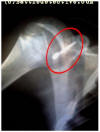

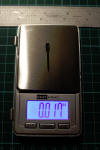

Flechettes are small nail sized
steel projectiles with stabilizing
fins fired in large volumes.
They weigh 0.0017oz and measure just
over an inch. The X-Ray shows impact
on a person. |
|
Back to Battlerelics
 |
|
|


